#Mae is my favorite human in the modern movies
Explore tagged Tumblr posts
Text
Watched more deleted scenes and it’s so clear that Mae saw Noa as a potential friend. Not just as a tool to use or an inevitable enemy.
During the campfire scene after Mae reveals she can speak, her and Noa were going to have a moment to themselves where they were going to talk about what they saw in the telescope & about the meaning of dreams. It was a very vulnerable conversation of Noa talking about his father and Mae talking about her mother. They were bonding not only over their mutual confusion about stars and space, but also over their parents.
Towards the end of the convo, Noa says something self deprecating and Mae stops him, saying he’s different from the others, before she walks away to sleep.
It was a really nice, touching moment between the two and I don’t think Mae was lying. Even she seemed surprised by her own sincerity. Like she’s still grappling with the idea that maybe Noa is different. Maybe apes aren’t all the same. Like this is the start of a very small seed undoing her preconceptions.
The scene definitely wasn’t them becoming besties, they’re still very far from that if they reach it at all. But I think Mae was beginning to see the POTENTIAL for a positive relationship. Something she didn’t expect traveling with an ape.
Which makes the finale where Mae holds the gun behind her back even more heartbreaking. Because she fears she might have to put down one of the VERY FEW apes she didn’t have to be afraid of. That she might not have had to be enemies with. Raka and Noa are the first apes she’s ever met that treated her with kindness, mercy, and compassion. Raka died saving her life, and now she might have to take Noa’s. It’s excruciating how alone Mae is.
But then Noa reminds her that maybe friendship between apes and humans is still possible. And Mae says she doesn’t know, but then she accepts Raka’s necklace and cries and leaves in peace, and it’s clear which path she subconsciously prefers (co-existence), it’s just going to take her some time to reach the conclusion herself.
While the deleted scene had to be scrapped because the subplots it covers got scrapped, I wish at least another version or rewrite of it had been made so it could’ve kind’ve stayed. That moment of them letting their walls down by the fire was really touching!
❌ Don’t tag as ship ❌
#Mae is my favorite human in the modern movies#she’s so incredibly interesting#and I love her dynamic with Noa and Raka#kingdom of the planet of the apes#kotpota#pota#planet of the apes#Mae#Noa#kingdom#noa trilogy#thoughts#analysis#I almost wanna say those ppl who think Mae is like a demon or smthg should watch the scene#but I think some of them just hate on her Just Because and it won’t change their mind :/
88 notes
·
View notes
Text
Quarantine Netflix Recs
Since were all at home watching Netflix I thought I would give my fav show/movie for every letter so everyone has something new to watch. Please send me your own recommendations or make your own alphabet list and tag me! Here goes:
A: Anne with an E- This modern take on Ann of Green Gables is quirky, fun, and dramatic. It has good music, writing and is all around a good watch. It deviates from the books a bit, but keeps the spirit.
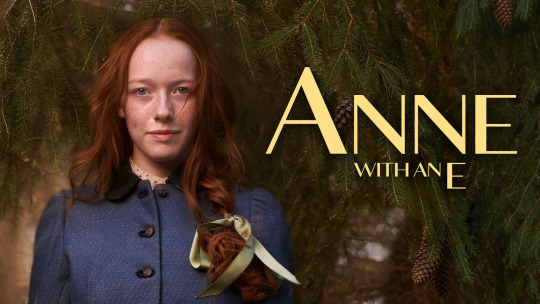
B: Broadchurch- If you like crime dramas, this is for you. With one crime spanning the complete first season it delves deep into motive and emotions. David Tennet stars in this tense British mystery.

C: Cargo- A dystopian zombie apocalypse film set in Australia with a focus on human connection, and sacrifice. This is honestly so different than any other zombie movie I have seen in the best way.
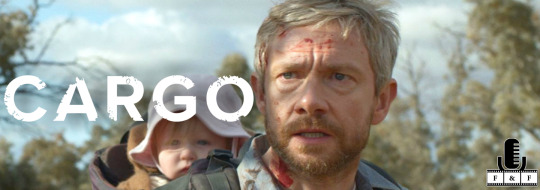
D: Daybreak- Sticking with the apocalypse theme, daybreak is a humorous view on what happens when a nuke kills all the adults and leaves all the teenagers. Its like if high school was the whole world, but the world had also ended. Strong characters and ‘Ferris Bueller’ esc fourth wall breaks give this show something special.
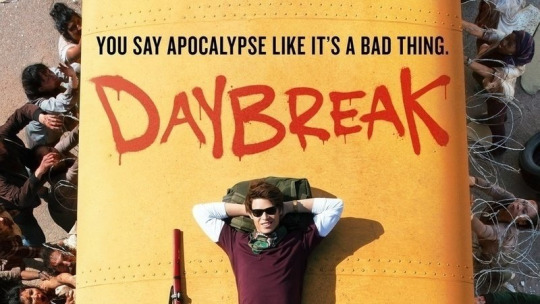
E: The Worlds Most Extrodiary Homes- For a change of pace this mindlessly beautiful home reality show shows off architecture that could be classified as art and makes me wonder how anyone can actually live here. If you just want something with no stakes what so ever, this is the eye candy for you.

F: Frontier- A gritty, and dark period piece starring Jason Momoa as the badass outlaw working against the British in the Canadian wilderness. Half political, half survival drama this show focus on the fur trade during the 1700s as well as themes like revenge, family history and love.
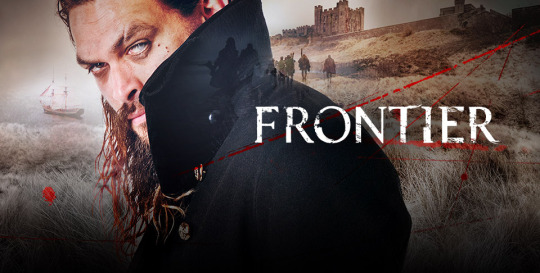
I have to do two for F: Feel Good- This emotional comedy is about Mae, a gay, ex-addict comic and her previously straight girlfriend. It is real and emotional and hilarious. It’s filled with amazing characters and amazing writing and explores hard to talk about subjects, including addiction, love, coming out, and family and romanitc relationships.
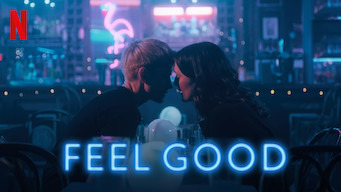
G: Godless- A refreshing addition to the western genre. An injuryed outlaw, a headstrong widow, the whole of the wild west. Gritty and dramatic, this mini series is a must watch

H: How it Ends- Another apocalypse film, can you guys see a pattern? This one is less about the event however and more about family. A young man and his future father-in-law travel across the desolate wasteland of the USA to save his fiance.

I: I am Not Okay with This- A sci-fi coming of age story, based on a comic book, about a young girl who develops mysterious superpowers and is not okay with it. Also shes gay and in love with her best friend, its great.
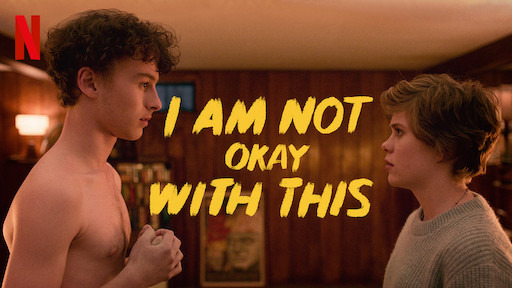
J: John Mulaney- I assume everyone has already seen all of his specials, but if you haven’t go check them out! They are hilarious and relatable on a deep level.

K: Klaus- This is my new favorite Christmas movie. Its got wit, charm, great character development and beautiful animation. It’s the first original Christmas movie that I've liked. It gives a new spin to all your favorite Christmas traditions while holding on to the essence of the Christmas spirit.
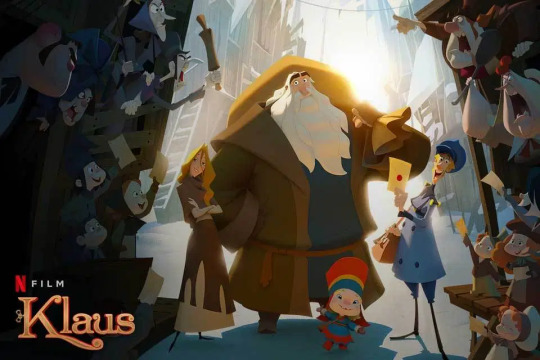
L: Let it Snow- Based of the book co-written by Maureen Johnson, John Green, and Lauren Myracle this film is a feel good romance with quicky characters that have thier lives changed forever by a snowstorm in their small hometown. Friendships and romances are formed and tested as these teens figure out how to deal with what life throws at them.

M: Maniac: In an unlikely pair Emma Stone and Jonah Hill work amazingly well together in a drug trial that is supposed to cure all mental illness, of course not everything goes as planned. Our heroes go through multiple stages of the trial and discover their brains are miraculously linked. This series merges multiple genres into something surprisingly cohesive.

N: National Treasure- “I’m gonna steal the declaration of Independence”
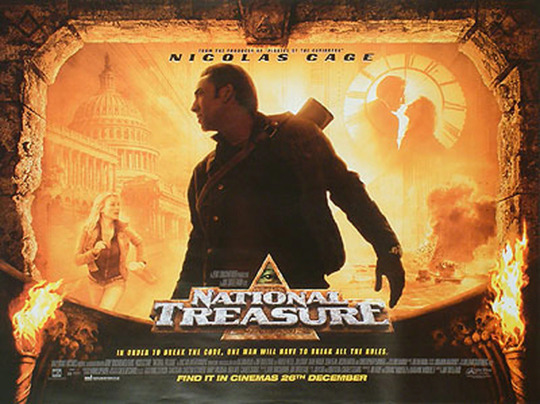
O: The OA- A psychological sci-fi thiller about a blind girl who gets kidnapped and held prisoner by a mad scientist looking for other dimensions. The friends she makes along the way mean everything, but when she gets found not only are they missing, but she can see again.
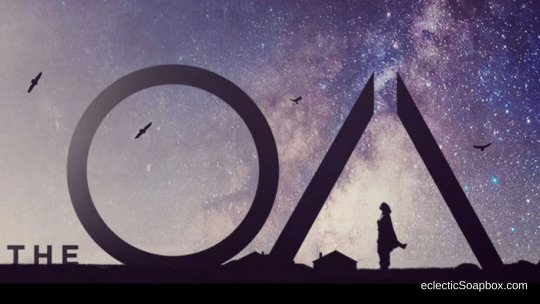
P: Princess and the Frog- A cute Disney twist of the classic fairy tale. A young woman working hard to buy her own restaurant meets a prince that has been turned into a frog by a shady magic man. But when she kisses him he doesn’t turn human, she turns frog. Together they have to figure out how to get back to being human and along the way they learn what they really need.
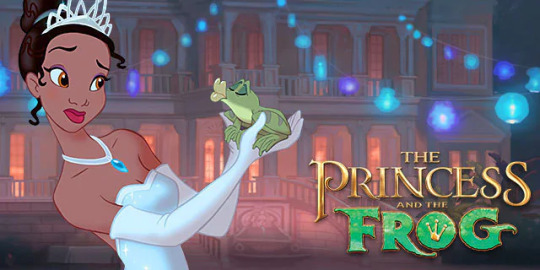
Q: apparently I have never watched a single thing on Netflix that starts with Q. So Queer Eye I guess. I’ve never watched it, but I've heard good things.
R: The Rain- After a deadly virus is discovered in the rain, sister and brother, Simone and Rasmus are separted from thier family and hide in a bunker for 6 years. Once they are forced to emerge they discover the world is much different than how they left it and their family wasnt all they thought it was.

S: Sense 8- This sci-fi drama focuses on 8 people from all over the world connected by some kind of psychic link. As they discover the extent of thier new abilities they also find out they aren’t the only ones and some others aren’t so friendly. This series was made with so much love and divotion and it shows throughout. The character development and backstories are rich, the writing is witty and thoughtful and the representation and focus on love above all else is so refreshing.
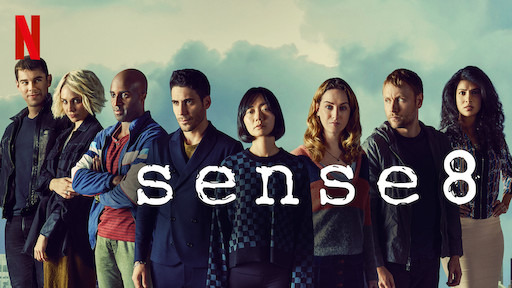
T: Tallulah- This drama is dark and witty, while simultaneously being bright and uplifting. When a young drifter kidnaps a baby from a neglectful mother and pretends the baby is hers, her boyfriends mother takes them in. The story is about family and doing the right thing, even when you can’t find the right choice in the grey area.
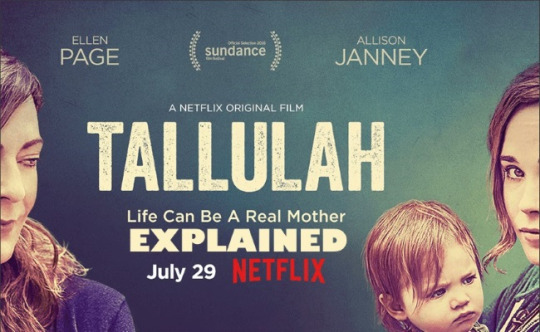
U: The Umbrella Academy- This series based on a comic book written by Gerard Way is about superheroes with out being about superheroes. They don’t save the day. They can barely save themselves, oh and also the world. Numbered 1-7 these siblings all have their own issues and getting them to work together was the dying wish of their asshole of a father.

V: None? Anyone have any ideas?
W: The Witcher- This series, based on a video game based on a book, is about a mysterious monster hunter and the bard he meets a long the way. Somehow full of action and also full of humor this series delves deep into the history and culture of this fantasy world.
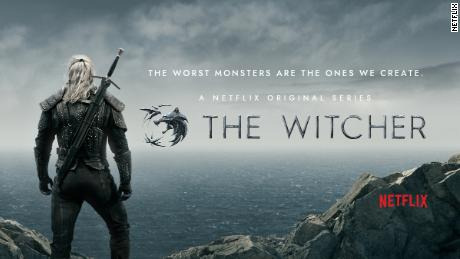
X, Y, Z: I got nothing guys, but thanks for reading all the way down here. I hope you watch some of these shows and that you send some of your own recs to me!
Also None of these photos or shows or anything are mine and all belong to their rightful owners
#the witcher#The Umbrella Academy#klaus hargreeves#tua#tallulah#sense8#wolfgang#the rain#princess and the frog#disney#the oa#national treasure#let it snow#maniac#Klaus#i am not okay with this#john mulaney#cargo#how it ends#godless#frontier#feel good#mae martin#day break#broadchurch#anne with an e#tv#netflix#movies#recomend
870 notes
·
View notes
Text
A Brief History of the Slasher
Is there a more iconic face for the horror genre than the knife-wielding psychopath? Many would say no. Although the tried-and-true slasher formula is so played out as to be a cliche -- and fresh examples played straight are tough to come by in the modern age -- for many, slasher films are the heart and soul of horror movies.
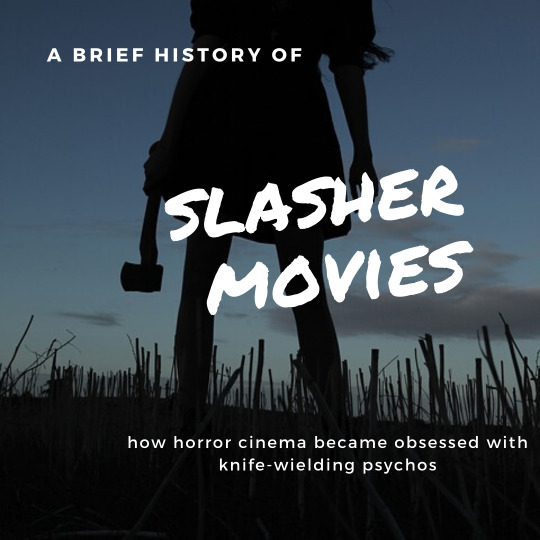
How did that happen? What do they say about us on a cultural level? And where should you start when it comes to a formal study of the topic? Let’s delve deep and find out!
Murder and mayhem are evergreen topics of fascination for humans, and we’ve been telling stories about murderers since Cain killed Abel. But these stories didn’t become what we would formally call “slashers” until the 1970s.
So what is a slasher?
Slasher films are defined by a few shared characteristics:
A high body count (multiple victims)
Murders are shown on-screen and often from the POV of the killer
The murders happen one by one, incorporating pursuit, struggle, and finally death
The killer may have a supernatural influence, but it will have the physical appearance of a human (and may often simply be a human)
In almost every instance, the killer is portrayed as being insane or rendered deeply troubled by a past trauma which had triggered the murderous impulse. The killer is frequently dehumanized, and the victims are usually young.
Slashers often adhere to their own sort of moral logic, more closely resembling Medieval morality plays than perhaps any other modern genre of storytelling. By utilizing a cast of archetypes, various virtues and flaws can be represented among the victims.
These traits are what differentiate slashers from other murder-focused horror, thriller and mystery tales.
Consider, for example, the narrative structure of an Agatha Christie murder mystery like And Then There Were None. In this book, a group of strangers are brought under mysterious circumstances to a remote location, where they are systematically murdered as an act of vengeance. In concept, this seems like it should be a slasher -- but its execution is quite different. In the book, the murders are a backdrop; the characters (and reader) are confronted with bodies rather than scenes of overt violence.
The First Slasher
In 1974, two films came out that gave birth to the modern slasher.
The first, released in October, was Tobe Hooper’s Texas Chainsaw Massacre. The second, released in the USA in December of that year, was Bob Clark’s Black Christmas.
Texas Chainsaw Massacre tells the story of a group of friends who run afoul of a family of cannibals living in a rural farmhouse. Black Christmas is about the systemic murder of sorority girls during Christmas break. And both left an indelible mark on horror history.
It’s important to put some context on the world these films were created in:
The recent dissolution of the Hays production code meant that movies could be more graphically violent and morally depraved than ever before
The Vietnam war was raging, and for the first time in history, televised footage of the battle was piped into living rooms on the evening news
Multiple serial killers were active in the country, and their exploits also graced the daily newspapers and nightly news to sow terror
Richard Nixon’s presidency was marked by an as-then unprecedented level of corruption and scandal
Gender politics provided both sexual freedom and career ambitions to a generation of women, and the 1973 landmark Roe v. Wade case legalizing abortions played a massive role in both gender relations and the way we would think about life and bodily autonomy.
The 1970s provided, in other words, a perfect storm of circumstances that collided to give birth to slashers, and neither Hooper nor Clark are shy about citing these as their inspiration. Texas Chainsaw was billed in theaters as a true story as an act of political defiance against newscasts that spread misinformation; Black Christmas is at its heart a film about abortion and a woman’s right to leave an abusive relationship. They were undeniably films of their time.
Texas Chainsaw inspired a wave of sensationalist "ripped from the headlines" murder movies loosely based on real killers, such as Wes Craven's The Hills Have Eyes (1977), which was based on the Sawney Bean legend or Charles B. Pierce's The Town That Dreaded Sundown (1976), which was based on the Texarkana Phantom Killer.
And Black Christmas, of course, served as the thematic springboard for a little film called Halloween.
Halloween and the Final Girl
In 1978, a little-known small-time director named John Carpenter was hired to make a movie with the working title, The Babysitter Murders. It would be about -- you guessed it -- babysitters who got murdered. The idea was later adapted to take place on Halloween, likely for commercial reasons: People like watching scary movies in October, so setting a film on Halloween night would surely help with popularity.
John Carpenter certainly did not wholly plagiarize Black Christmas with his holiday-themed slasher, but the earlier film's influence is visible all the same -- from a shared lineage of "the call is coming from inside the house" babysitter folk legend, to the perspective work on establishing shots of the house and the ambiguously bleak ending.
But compared to Black Christmas, Halloween is horror with its edges filed down so it'll be easier to swallow. Both films have predominately female casts, but the sorority girls in Black Christmas have sexual agency and outspoken opinions that are nowhere to be found in Carpenter's work. In fact, Halloween so aggressively fails the Bechdel Test that it seems to do so on purpose -- there is not a single scene with two girls where they are not talking about a boy. And while Black Christmas deals with complex topics like abortion, domestic violence, and the unreliability of the police, Halloween simplifies its formula down to the utterly basic: Michael Myers kills because he is pure evil, and that is simply what evil does.
Despite its flaws -- or perhaps because of them -- Halloween became an immediate and enormous hit. It also introduced several clever storytelling techniques that were crucial to the advancement and development of the slasher genre:
The introduction of a Final Girl, the lone survivor who holds out against the onslaught of terror. (Carpenter denies that Laurie Strode’s virginal innocence has anything to do with her survival, but “final girl as virgin” would persist as a trope for a very long time)
A masked killer. Although we’d seen masked murders in many films before (I’ve talked in the past about the trope of the mask-wearing murderer, and the way it is both thematically and logistically useful in storytelling: https://tlbodine.tumblr.com/post/189658195609/the-masked-knife-wielding-psycho), the “look” of Michael Myers is so iconic that it inspired a need for future killers to have a similarly thoughtful design, decking them out almost like comic book superheroes.
Franchising opportunities. Although earlier movies had spawned sequels, Halloween exploded as a franchise thanks in large part to the iconic design and the simplistic good-vs-evil storytelling formula. Future slashers would latch onto this killer-centric franchise formula for over a decade.
Halloween became the most profitable independent film, holding the record for 16 years, which goes to show just how successful the formula truly was.
The Golden Age of Slashers
As the 1970s gave way to the 1980s, the advent of VHS and Betamax formats created a market for low-budget straight-to-video films. Because slashers are so cheap to make (you don't need any famous actors, can film entirely in one location, and practical effects can be as simple as a few gallons of stage blood), they were ideal candidates for the job. On the big screen, horror was enjoying an unusually high level of popularity, a proven money-maker, simultaneously commercial and subversive in a decade of opulence and social conservativism.
So onto that stage walks Sean S. Cunningham's gory slasher, Friday the 13th, where a group of teenage camp counselors are brutally murdered, frequently wile having sex. The film spawned a widely successful franchise, which swiftly began borrowing elements of Halloween -- a silent and indestructible masked killer, a signature musical score -- to become a pop culture mainstay. The 1983 Robert Hiltzik film, Sleepaway Camp, cashes in on the "death to camp counselor" plot in the same way that Fred Walton's When a Stranger Calls touched on babysitter murders in 1979.
A whole slew of less-successful films would follow, most of them lost to the history books but still living in dollar-bin DVD collections. Some, like Prom Night and My Bloody Valentine, would earn a cult following. One noteworthy cult favorite is Slumber Party Massacre, directed and written by women (Amy Holden Jones and Rita Mae Brown, respectively), which turns some slasher tropes in their head.
A glut of films, most of them instantly forgettable, led to a decline in slasher popularity -- until Wes Craven's A Nightmare on Elm Street in 1984.
Cracking Wise and Slashing Teens
A Nightmare on Elm Street introduces Freddy Krueger, a different sort of horror villain than audiences had seen before. Krueger is a supernatural killer who stalks his victims in their dreams, bringing a fresh supernatural twist to the slasher genre. And, unlike Michael Myers and Jason Voorhees, Freddy is anything but silent. Thanks in part to the charisma of lead actor Robert Englund, the character's darkly comedic personality became utterly riveting.
Plenty of dream-related horrors would follow, none of which would make much of a splash. But one film franchise did latch on to a similar formula: Child's Play, directed by Tom Holland in 1988, introduced another supernatural wisecracking killer in the form of Chucky, a murderous doll possessed by the soul of as serial killer.
These major film franchises -- Halloween, Friday the 13th, A Nightmare on Elm Street, and Child’s Play -- would go on to spawn numerous sequels and become such a thoroughly pervasive part of pop culture that you can find their likeness everywhere. But despite the many imitators, there was little in the way of innovation in the genre until the mid 90s.
Do You Like Scary Movies?
Wes Craven toyed with the idea of self-referential horror in New Nightmare, a Freddy Krueger film that was itself a meta-analysis of Freddy Krueger films. But he would revisit the idea with far greater success in 1996 with Scream.
Created by horror lovers, for horror lovers, Scream is designed to be the most quintessential slasher film ever created. Relying on a hip, young cast to draw in a fresh audience, Scream works by combining nostalgia, meta-analysis, humor, and buckets of blood into a single film. The opening scene is a direct homage to When a Stranger Calls, and the masked killer is a deliberate call-back to earlier films.
Unsurprisingly, Scream was a huge hit that ushered in a brief but furious wave of slashers, like the star-studded I Know What You Did Last Summer (1997) and Urban Legend (1998), and Scream itself had several sequels and even a TV series. But the 1990s were something of a dark era for the slasher film, seeing the release of some spectacularly lackluster franchise installments. One exception to that was the fan-favorite Freddy vs Jason, which pits the two killers against one another -- a delightful premise, but one that had strayed far from the slasher roots.
Modern Slasher Films
The 1990s slasher reboot was short-lived and mostly forgettable, and by the 2000s filmmakers had mostly turned away from the genre entirely, except for a slew of nostalgia cash-in reboots of every popular franchise.
The one exception was meta-analysis -- building on Scream, these films began to deconstruct the genre in a way that would combine horror, humor, and criticism.
The Final Girls (2015), directed by Todd Strauss-Schulson, takes this sort of meta approach. The Cabin in the Woods (2012), directed by Drew Goddard but bearing the fingerprints of co-writer and producer Joss Whedon, takes it to even further excess, providing both a thorough deconstruction of horror gropes and an entirely new mythos to give it a fresh framework.
But the problem with deconstructions is that, once a few truly successful ones have been made, it becomes essentially impossible to create the original thing in earnest anymore. And so the slasher as a sub-genre has reached its bloody end.
Where Did All The Slashers Go?
With dozens of slashers spanning more than 40 years of film history, it’s pretty hard to create something new with the format. Which is not to say that people aren’t still making them -- they are -- but there is less room to innovate within the notoriously rigid and simplistic slasher formula.
Culturally, we’ve moved on a lot from the 1970s as well. For one, serial killers are no longer the threat they once were. Babysitters and camp counselors are rarely teenagers, either -- in fact, teens aren’t leaving the house as much in general. And a rise in information technology, communications and surveillance has made it harder to isolate victims and commit murders over a long period of time -- our mass murders tend to happen in shooting sprees instead these days. For another, that same information technology has made us extremely jaded and hard to impress with gore.
The 2000s delivered violence at levels utterly beyond anything in history. The rise of the so-called torture porn -- a genre that dispenses with the stalking and killing of multiple victims in favor of lingering on the painful mutilation of a small handful -- delivered gore unlike any seen in earlier slashers. Cable television series like The Walking Dead deliver graphic violence with unprecedented regularity -- you no longer need to pick up a “video nasty” to indulge in some gruesome gore.
And, well, unfortunately, the internet has made it easier than ever to see real violence, from terrorist beheading videos to medical gore to live-streamed murders.
Gore for gore’s sake is simply not as compelling in the 21st century, and that takes away much of the slasher’s appeal.
Slashers have had to morph and adapt to find a foothold for survival. In the 2000s, we saw their metamorphosis in real time: From torture porn to home invasion to a cornucopia of more innovative horrors dwelling on fears both large and small.
We’ve probably seen the last of masked knife-wielding, babysitter-killing psychos...but the horror genre is richer for it.
33 notes
·
View notes
Text
Quaranthings: Korean Dramas
It’s been a while, Tumblr. LOL I haven’t posted in a while – but we are living in a time of pandemic. I have never thought such day would come but here we are.
It has been 41 days since Enhanced Community Quarantine (ECQ) was implemented in Manila – and I have managed to catch up on my Korean drama backlog.
Thanks to streaming sites like Viu and Netflix, I have spent countless hours just catching up on the latest dramas (The King: Eternal Monarch, Itaewon Class) and the ones I have not finished watching (Mr. Sunshine, Reply 1997, Go Back Couple, Kill Me, Heal Me, My Love from the Stars). I also found time to rewatch my favorites (Secret Garden, Innocent Man).
The last one I watched was Mr. Sunshine. The writer, Kim Eun Sook, tells the story of a Joseon slave-turned-American soldier named Eugene Choi and a noble named Go Ae Sin – and the people around them: the mysterious samurai Go Dong Mae; the rich playboy Kim Hee Seong; and the beautiful, rich heiress/double agent named Hina Kudo. Set in the early years of the Korean Empire (led by Emperor Gojong), the drama depicted the political turbulence of the time: the traditional Joseon ways clashing with that of imperialists as well as the personal struggles of each character. Then there’s storge, eros, philia, and agape - I’ll probably write another review of that because in terms of writing, I think this is the best Kim Eun Sook drama.
I have been meaning to write something like this, but I guess I was inspired to share with the world why I love Korean dramas – like it really is a hill I would die on anytime.
Some weeks ago, a Filipino director openly tweeted his disdain for Korean dramas. In his words, he said that Filipino movies and tv are “doomed” because of “K-drama galore: faux Cinderella stories with belofied whiter than white actors. And it’s all about love in the midst of pandemic.”
LMFAO. I had to laugh.
It came from a director with reputable filmography – I mean I loved two (2) of his films for their social commentary but I have to ask.
How many Korean dramas have you watched – LOL don’t tell me you only watched Crash Landing on You.
HELLO, ITAEWON CLASS WAS IN THE TOP 10. DID YOU WATCH THAT? Did you watch the rags-to-riches story of Park Saeroyi and his quest for justice to defeat the biggest food company, Janga Corporation?
Have you watched Sky Castle? The compelling story of rich families and their schemes to get their children into the best universities?
How about the Reply series? A nostalgic drama that tells the story of families, youth, and the times they lived in – 1994, 1997, 1988 – the nostalgia was fucking rich. I especially enjoyed 1994 and 1997.
Did you check out Another Oh Hae Young: a woman struggling to come into terms with her personal insecurities? Or have you picked up on It’s Okay, That’s Love: a romantic drama that properly tackled mental illness (the lead had schizophrenia).
From personal experience and the vast filmography of Korean dramas I have seen, let me point out why Korean dramas are the best – and why they’re so fucking addicting. I would have to say that this is not a research paper but rather a lengthy analysis based on my 12-year experience as a Korean drama enthusiast.
1. Creative value
Every drama starts with a great plot.
Sure, many Korean dramas are romantic. In fact, most of the Korean dramas I have seen in the early 2000s are romantic: Autumn in my Heart; Stairway to Heaven; Winter Sonata; Full House; My Name is Kim Sam Soon; and Princess Hours. There’s also Memories of Bali; I’m Sorry I Love You; and Coffee Prince. These dramas actually launched the Hallyu (Korean wave) that we know today – and their plots have the typical Korean drama romantic equation: guy meets girl – they don’t get along at first – then they fall in love – misunderstandings (or separation) ensues – reunited – fall in love again – they get married or end up together (or a lead dies). Then there are the non-romantic ones (historical): Jewel in the Palace and Jumong.
But as time went on, you see that the genres become varied – we started seeing action dramas (one of my favorites was Time Between Dog and Wolf) and medical dramas. Then there were dramas that also featured how Korean dramas were made (The World We Live In).
Korean dramas have varying plots that get recycled in many instances but with great plots also come characterization. The characters we see in dramas remind us of real people – we always relate to a character and we all get frustrated when they make stupid decisions (the Noble Idiot Syndrome) that really do not make sense. At the end of the day, we want happy endings for those who deserve happiness – we want justice served, we want closures, etc. because that’s how humans are.
In many romantic dramas, plots are reused but no character is the same. They would have similar traumas but never the same, carbon-copied character. There are villains you want to kill and then there are villains you sympathize with – because you realize that humans are multilayered, complicated creatures.
2. Production value
Another observation I have with Korean dramas is their careful attention to details. When writers create the script, they somewhat have actors in mind to play the character. In Korean dramas, they don’t really care about love teams. In the Philippines, we produce dramas based on the hottest pairs. In Korea, they don’t give a shit about that. Dramas are produced with the intention of creating a meaningful production so actors are chosen based on whether the writers and producers think they can bring their characters to life, not because they are the hottest commodity. In some dramas, actors have to audition, but in many instances, scripts are sent to actors with potential to perfectly portray the character.
Prior to filming, writers, actors, and production staff would spend a day or two in story conferences – actors would have the opportunity to discuss with everyone how he or she thinks his/her character is like. The directors and writers would provide their input on how the characters should talk, act, etc. Actors would also take the extra mile to learn a skill or two for the characters they played. They would have dialect coaches, language instructors, etc. Writers would consult with professionals – for instance, in many medical or legal dramas, they would hire doctors or lawyers on board to verify accuracy of terms. During broadcast, you would even see the jargon on screen to simplify them for the audience. In historical dramas, you would also see the terms used (in Chinese characters) and explain them in hangul.
During filming, you’d see how the staff has placed much attention on details – from the wardrobe to the set. You would also see themes, symbols, etc. The production aspect is really like how movies are: vivid, deliberate, beautiful. Who would’ve thought red pinwheels would make me tear up?
Each drama has a particular soundtrack – can I just say that Korean dramas have the best soundtrack. Each song played in a specific scene perfectly conveys the mood and feelings of the character. I have cried so many times listening to Park Hyo Shin’s “Snow Flower” (I’m Sorry I Love You) or Ji Sun’s ”Goodbye Without Saying Goodbye) (My Name is Kim Sam Soon). On my Spotify account you would see I have played Goblin, DOTS, and CLOY OSTs countless times.
In the past, dramas are not really pre-produced (meaning script came a week or two before filming). There are dramas wherein halfway through the broadcast, they had to switch writers because the earlier writer had a falling out with the production – so you’d see that the quality suffers (story plots would go crazy lol). There are dramas wherein they had to replace the actors because of scandals or accidents. In the last 5 years however, Korean dramas have become pre-produced: meaning the dramas will be filmed 6 months-2 years before being broadcasted. I guess this aspect has contributed to the fact that many Korean dramas are already available on streaming sites.
3. Cultural value
Each drama gives us a slice of the Korean culture – food, drink, skincare, attraction, and history. And noraebang (karaoke). Every romcom Korean drama has to have a scene at the noraebang...or jimjilbang (sauna).
Modern and traditional Korean dramas have to feature food: Korean barbecue, stew, side dishes. LOL you name it. There’s also soju, beer, and makgeoli. BEER AND CHICKEN.
In most modern Korean dramas, makeovers are a must. You would see product placements of known Korean products: Laneige, Etude House, Nature Republic, etc. The characters would go shopping in a particular shop like The North Face. Their coffee dates would be in one of these (Caffe Bene, Dal.Komm, HOLLYS, Zoo Café, Mango Six). They would buy their cakes or bread from Paris Baguette or Tous Les Jours.
Then there are road trips – many Korean dramas would feature a particular attraction, province, or city. Who can forget Nami Island (thanks Winter Sonata) or Namsan Seoul Tower (Boys Over Flower) or Petite France (Secret Garden, My Love from the Stars)? Of course, you can’t forget Busan (Reply 1997) or Jeju (Warm and Cozy) or Gangwon-do. It is definitely a K-drama fangirl’s dream to be able to visit in one of these places so we can relive our favorite Korean drama moments.
All of Korean dramas I have seen put emphasis on family – the importance of filial piety is always highlighted. The characters are often portrayed as dutiful daughters or sons. Conflicts often ensue when the character is challenged to choose between the parents or the love of his/her life (well in most Korean dramas that’s the case lol). Many dramas portray characters who try to be the good daughter-in-law and yet nothing is ever good enough. Then there are subtle flexes on Korea as an emerging superpower as seen by drama characters (chaebols) who head conglomerates. There is always a character who is filthy rich and can afford a billionaire lifestyle. Product placements include big companies like Samsung, Hyundai, etc.
Slice-of-life dramas also depict the realities in Korean society. Because This is My First Life and Something in the Rain aptly depicted the realities of harassment in the workplace from a woman’s experience. Many Korean dramas also relay harsh realities: meritocracy in the workplace; young adults juggling multiple jobs to make ends meet, etc.; even real estate situations are featured. Often you would find characters renting a small room because that’s all they can afford. From the dramas you would also notice that Koreans are not very kind towards single mothers or orphans. Then of course, there’s the North and South Korea situation: Crash Landing on You, Doctor Stranger, Spy Myeong-Wol, Descendants of the Sun are a few dramas that discussed this theme. The Reply series is a nostalgia drama featuring families that lived through some of important events in South Korea like the Seoul Olympics (1988), Asian financial crisis (1997), Sampoong Department Store collapse (1995), and the historic World Cup (2002).
Korean historical dramas are also interesting on their own – I guess until now, the Japanese occupation of Korea is still a sensitive matter for Koreans. Many of the dramas that feature such themes always depict the resilience and resolve of Koreans as they try to fight off the enemy. Yes, the scenes are depicted artistically, and the thought lingers long after the episode is over.
In terms of marketing, the government has also been proactive. With the Korean Wave (Hallyu), Korean dramas, as well as films, music, food, etc. have become an important commodity overseas. In 2016, Korean Culture Center wrote that Descendants of the Sun was sold to 27 countries, posting a profit of over KRW 10 billion (Php 412 million). The government acknowledges the important contribution of Korean dramas in tourism. Numerous papers have already been published showing the effect of hallyu in the South Korea tourism industry.
To make the long story short:
Korean dramas have gone beyond “faux Cinderella stories with belofied whiter than white actors”. I mean, if you want to produce a quality drama, it takes time and effort. Personally it has become a great escape from the realities I face. I do not welcome opinions that clearly spring out of snobbery and disdain for another person’s craft. Perhaps the director can look beyond the Top 10 (since that’s what he mentioned) and check out the wide selection on Netflix. Viu is also a great platform (I’ll start on World of the Married – been hearing and reading about it lol)
Hallyu did not flourish overnight, and the Korean drama industry – while a great model to cite – is also not perfect. There have been numerous cases and instances when staff are overworked or not paid long after the production is over. The #MeToo movement has also exposed some actors who have harassed fellow actors. If we want Filipino dramas to enjoy the same spotlight as that of the Korean dramas, we should be frank about the outputs we have had. We have potential, but it really is up to the decision-makers (at least from the network perspective since it’s all about profits and star value rather than quality production in the Philippines) to come up with a formula that would revitalize Filipino dramas. I can’t say the same for Filipino films because we have great films – the dramas need much work to be profitable. I mean, are we really satisfied with a few dramas being sold overseas? When will we produce dramas that are at par with our Korean chingus? If you want Filipino dramas to be streamed on Netflix or Hulu or Apple TV – maybe we can look at genres beyond police brutality or infidelity or hacienderos harboring a secret child somewhere.
Anyway, Korean dramas are awesome – and that’s the tea.
3 notes
·
View notes
Photo

Shiver Me Timbers! (1934 short)
As animated short films emerged from the silent film era, the major Hollywood studios acquired or partnered with animation studios to quickly produce shorts that could be shown before or in between movies. One of the most important names in American animation in the 1930s was Fleischer Studios – co-founded by brothers Max and Dave Fleischer – partnering with Paramount. The Fleischer shorts, unlike their competitors across town, usually concentrated on human characters – their filmography more commercial than artistic for art’s sake. Due to messy rights issues and modern-day corporations not seeing the value in the older movies they have acquired, much of the Fleischer filmography is unknown to audiences. That includes the films of Betty Boop, whom younger generations have a superficial knowledge about (the upstart company Olive Films has recently remastered some of the non-public domain Betty Boop shorts for home media), and the seventeen Superman shorts released from 1941-1943.
Surviving this mélange of media acquisitions, mergers, and dismissive attitudes to older media is Popeye the Sailor. Popeye, introduced in a comic strip in 1929 and first appearing in cinemas in 1933, has outlasted in the public imagination anything else that Fleischer Studios ever released. The visibility of the muscular, spinach-loving, pipe-smoking sailor has been kept intact because of the character’s rights belonging to Turner Entertainment (whose properties include Cartoon Network – which used to air Popeye regularly – and Turner Classic Movies, TCM) by way of Warner Bros. With Halloween nearing, the subject of this write-up is the twelfth of 108 Popeye shorts released by Fleischer Studios from 1933-1942 (Fleischer’s successor, Famous Studios, increased that total to 230 through 1957), Shiver Me Timbers! The film is credited to Dave Fleischer as a director, but research has shown his duties were closer to being a producer and creative supervisor. Most of the directorial work probably fell to credited animators Willard Bowsky and William Sturm.
Released in midsummer 1934, this is an early Popeye piece: in black-and-white, well within the era of rubber hose animation, the sound mix imperfect. After presumably being out in the ocean, Popeye (voiced by William Costello), Olive Oyl (Mae Questel; if you are unfamiliar with the Popeye series, Olive is Popeye’s longtime love interest of varying ambiguous relationship statuses... Questel is also an underrated voice actress), and Wimpy (Lou Fleischer) stumble upon a ruined, beached ship – its sails tattered, its wooden planks falling apart. Popeye immediately recognizes this to be a ghost ship and decides to investigate – against Olive’s better judgements. This film would not be interesting if they decided against climbing onboard, so of course they climb up the ladder that magically unfurls itself onto the ship’s deck! The ship moves itself off the beach, out to sea, and the spooks haunting the ship start toying with the too-curious mortals.
What makes the Fleischer animated shorts so difficult to judge compared to their peers from Walt Disney Animation Studios (partnered with Columbia, United Artists, and RKO at separate times across the 1930s; Disney did not become a major studio until the 1990s) and Warner Bros. (their animation arm an in-house body of the studio) is that they are largely formulaic. Popeye might be the most formulaic of all the Fleischer series, especially the later years under the Famous Studios moniker. The narrative usually follows this order: Popeye finds himself chasing or with the love of his life in Olive Oyl; arch-nemesis Bluto enters the scene and proceeds to abduct or, with dishonorable intentions, flirt with Olive; Olive winds up in trouble; Bluto beats the living daylights out of Popeye in ways that would otherwise kill any normal person; near unconsciousness or death, Popeye eats his spinach and proceeds to give Bluto (and his minions, if applicable) a walloping outdoing anything Bluto did to him; Popeye gets what he wants; and he sings the following or a variation of it: “I’m strong to the finich/finish, ‘cause I eats my spinach, I’m Popeye the Sailor Man!”. Toot, toot!
Shiver Me Timbers! is a refreshing take because Bluto is not here to bluster his way through the plot. Instead, the film revolves around a bunch of ghosts having their way with Popeye, Olive, and Wimpy – playing with the characters’ personalities that Bluto might exploit for nakedly nefarious purposes. Separating this Popeye entry from many others in this decade is the time given to the supporting characters. Though it criss-crosses between Popeye, Olive, and Wimpy, the film always feels cohesive, with all of its jokes landing. For Olive, some of the early Fleischer Popeye shorts show her as very capable of physically holding her own against those who might want to harm her (one of my favorite gags including her is near the end of 1933′s Blow Me Down! – where she is closing her eyes, calling out for Popeye’s help, not realizing she has hammered Bluto senseless with a wooden club, saving herself). At one point in Shiver Me Timbers!, Olive is abducted by the ghosts, but their form of “torture” is the funniest moment in the film. The gluttonous J. Wellington Wimpy (better known as just “Wimpy”; his role in the comic strip downsized in cinematic adaptations of Popeye), in a rare development, actually has lines to deliver – completely fitting in with his cowardly character. The tricks played on Wimpy are tailored to his weakness for food. It is utterly ridiculous with flourishes of physical absurdity often found in 1930s animation and that would be less emphasized in later decades.
No, Shiver Me Timbers! will not scare anyone, but one still would not want to experience what Popeye and his friends go through on this boat ride from hell. Well, the funnier side of hell, even down to Sammy Timberg’s musical direction (Timberg worked for many of the Fleischer short films, but also contributed songs to their features: 1939′s Gulliver’s Travels and 1941′s Mr. Bug Goes to Town). From an animation standpoint, Bowsky and Sturm make use of glass plates and miniature sets to make their animation look less flat – this process was a relatively new feature in 1934, and gave their backgrounds dimension. This technological accomplishment would be perfected by the Fleischers’ primary rival, Walt Disney, in 1937 with the introduction of the multiplane camera.
The film is one of the best from Popeye’s early days at Fleischer because of its willingness to defy the typical Popeye narrative (if just for a few minutes). The ridiculous situation and the inventive animation – a moment with skeletons might have been inspired by The Skeleton Dance (1929) from Disney – results in several minutes of ghostly chaos and entertainment one wants from an animated short like this. Animated characters exploring haunted locations has long been a staple in animated films and television, with Shiver Me Timbers! one of the best early entrants to that venerable tradition.
My rating: 8.5/10
^ Based on my personal imdb rating. Half-points are always rounded down. My interpretation of that ratings system can be found here.
#Popeye#Shiver Me Timbers!#Fleischer Studios#Dave Fleischer#Olive Oyl#Willard Bowsky#William Sturm#Max Fleischer#William Costello#Mae Questel#Lou Fleischer#Wimpy#Sammy Timberg#TCM#My Movie Odyssey
2 notes
·
View notes
Text
Actress Spotlight: Fredi Washington in “Black And Tan”

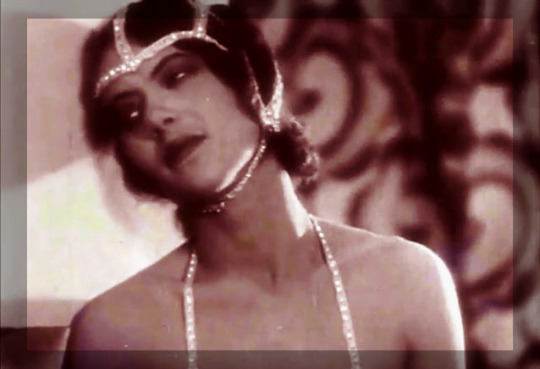
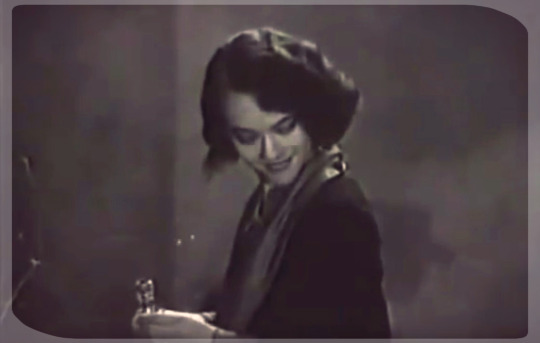
There's a great deal of class, talent and beauty loaded in this short film from the early days of "talkies", 1929′s Black And Tan. Man, this is a GEM. We're talking Duke Ellington flyin' high in his legendary career as a jazz pianist, composer, and bandleader and the beautiful pioneer of cinema, Fredi Washington, as his wife and doomed dancer. Film fans know Fredi best as the conflicted racial passer 'Peola' in the soapy melodrama from 1934, Imitation of Life, where she plays a girl who rejects her Black mama, pretends to be White and who ends up flinging herself on her mother's coffin in a veil of cinematic shame (yes, these are spoilers. A full review will be forthcoming on this infamous little saga at some point soon), but Fredi was actually quite a unique presence in film at a difficult point in its history for Black folks.
It was pretty difficult to catch a break in Hollywood if you weren't White. The stereotypes were running amuk using the face of a manufactured Blackness the movie industry created because of a racism, ignorance and contempt for humanity shown towards Black performers that was practically ingrained in the national culture, particularly in the segregated South where the mere sight of a Black person in a non-submissive role was incredibly taboo. This was the messed-up landscape talents like Fredi Washington entered as an actress and performer and was the major reason why a potentially promising career was cut short. However, here, her biggest role in Imitation was yet to come, the role that would unfairly define her to both Black and White filmgoers, and one that was as far removed from her thinking and personal life as a character could get.
youtube
In Black & Tan, Fredi has a fresh and natural presence from the moment she walks onscreen, with a hint of pain that flashes across her face in a brief scene, subtly showing the danger threatening to overwhelm her. She’s a dancer wed to a struggling musician (played by the super-suave Duke Ellington, of course), but she has a weak heart ticking brokenly and winding down what’s left of her life.
It’s a simple almost rudimentary plot but Fredi’s earnestness and style make it work, and pulls the action together. After being out of work, she’s landed a coveted dancing job and insists on helping her hubby catch a break with his band. Happy ending? Oh no. It leads to a sad, sad climax.
What I really like about the short is the confidence and skill of the performers. There’s a cool little scene where Ellington on the piano, and Arthur Whetsol on trumpet are having practice time, and it becomes a bit of a jam session. Fredi’s standing beside the keys with a radiant smile on her face as she listens to the men getting down to what they did so well. You can tell in the moment these guys seemed to be having fun. Opportunities were few and far between for Black creatives to dazzle the film audience and show what they were really capable of, so when the spotlight was there for the taking, they really didn’t waste it! They represented some of the best parts of themselves.

It’s also one of my favorite roles for Fredi Washington, although just a short, because the naturalism and ease of her screen vibe is a lovely indication and hint at how placed in a dignified cultural framework, she simply had more to work with creatively and in my opinion, emotionally. Imitation Of Life may have been her breakout role, but from my perspective, the way her screen image in this particular film was unfairly manipulated as a woman of color floating disconnectedly in a hostile and indifferent White world, lent to cliches, reducing a woman’s existence to an ‘abnormal’ other. In Imitation, there was a constant compare and contrast of her passing for White character to the privilege of the White counterparts who had no such struggle for social and economic clout. Although Washington does meet a tragic end in Black & Tan, there’s a confidence she exudes, a familiarity, that’s refreshing. And a sense of grounding that was likely a lot more realistic for light-skinned African American women rather than the rootless desperation of a Peola.
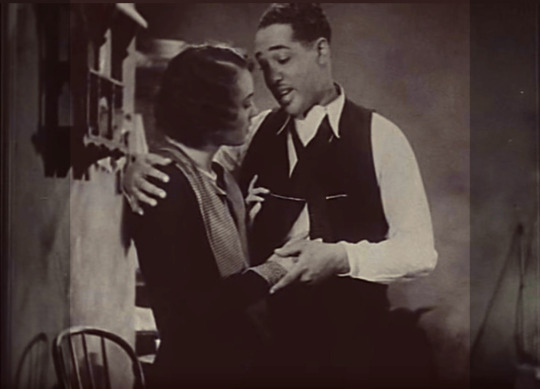
As for the nightclub scenes where Fredi spirals downwards into a total collapse, it’s actually a fine piece of acting!
Decked out in a dazzling number, Fredi’s vision is blurring and she sways on her feet as the smooth melody of the music plays. A bunch of Ellingtons fill her sight and the dancers multiply. Bad things are sure to come. Tragedy is near.
The way the club scenes are filmed is very interesting. The artistic manner of this young woman’s impending doom visually grabbed my attention. Black & Tan may have been only a musical short, not a full-length film, but the details is what make it great!
Fredi is draped in a costume that on many other actresses would make them appear high-glam and exotic. On the body of a frail and sick performer, it almost overwhelms her frame. She sinks into it. You can tell she’s teetering on the edge and working on what’s left of adrenaline. There’s a burst of it as she kicks into hyperdrive and does a frenetic dance, her final performance, to the beat of the band. Fredi was a fantastic performer, showing an intense energy. She is wonderful at first, but on her last leg in these few remaining moments of her life. Carried off the stage after crumpling in a heap on the floor, the last things she sees and hears on her deathbed is her beloved husband and the masterpiece of the film, the lush and hypnotic Black And Tan Fantasy.


Her deathscene was artfully filmed, heartache, regret and tenderness etched into the face of a woman cut down in her prime. With very few lines in this short and a basic premise, Fredi steals the show. She shows glimmers of what she could’ve been as an old movie queen, if given the chances of a Claudette Colbert or Myrna Loy. She’s luminous and never crosses the line into hysteria or camp. She’s just a girl in love and watching what she’s treasured slip away as she fades into darkness.
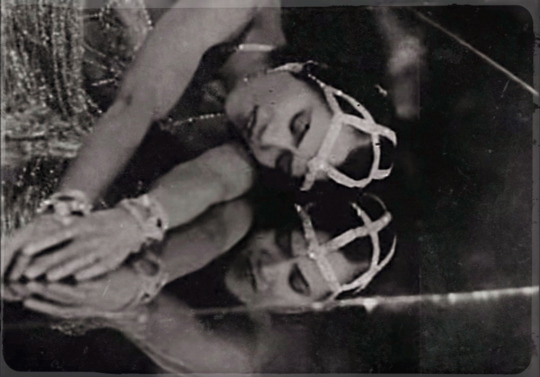

In 1929, the African-American presence was limited but there were reflections here and there in Hollywood-land of the magic of the Black female performer. The same year, Nina Mae McKinney had burst onto the scene as the exuberant ‘Chick’ in King Vidor’s Hallelujah!, a Black musical production which broke a bit of new ground.
Women like Nina and Fredi were rare in the fact that they presented a different aspect of Black womanhood, Nina going on to become the very first bonafide glamorous Black female star and Fredi continuing in a career that while unfairly stunted, encompassed stage and screen, starring in a Broadway production in 1939 with screen legend Ethel Waters in Mamba’s Daughters. The problem was the scarcity of roles; they were coming at a time when the White audience wasn’t quite ready for cherished stereotypes to be challenged.
Fredi Washington stayed in the game for some years later before departing Hollywood for advocacy and marriage, while her counterpart Nina Mae’s parts got smaller and smaller until she left film altogether, dying in relative obscurity in the late 1960′s.
The careers of women like her and Fredi shared something special, however. And while they did not get the careers they probably deserved, their presence onscreen helped to work towards changing the film presence of women of color in general. Without Fredi, there likely wouldn’t have been Lena Horne, without Lena, maybe not an Eartha Kitt or Diahann Carroll. Who knows if they helped knock the doors down a bit more for Halle Berry a few decades later! It was maybe not so much the reaching of the golden rings of fame and cinematic glory in the moment for these truly gifted ladies, but a ripple effect which could still be felt today.
Modern Hollywood has more Black female representation than they’ve ever had in its history. Yet there’s still so much work to do and progress to be made.
But for a magical moment in 1929, performers like Fredi Washington had cracked open that door to the future. Just a little bit.The short’s one of the most interesting glimpses of Black talent and glamour of the era. I enjoyed it so much! And appreciated the heart Washington put into what might’ve been a simple throwaway character. Check it out and be taken back to a different time where the struggle was a lot harder, but the determination to carve out a rightful space in history shone bright.
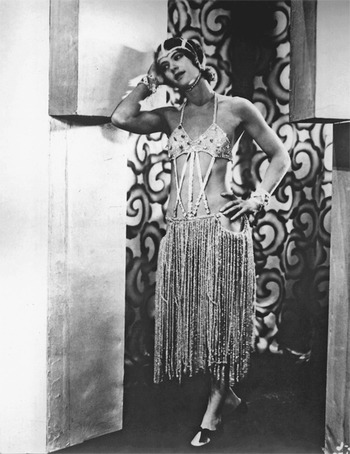
Fredi Washington and Duke Ellington sparkle in...Black And Tan!
#fredi washington#duke ellington#black and tan#1929#short film#musical short#musical film#1920s#Harlem Renaissance#Black film#African-Americans in film#African-American cinema#women in film#women of color#Black women in film#groundbreaking#trailblazers#talented women#Black actresses#Black And Tan Fantasy#black and white#early talkies#jazz music#jazz legends#silver screen#Black film stars#Nina Mae McKinney#club#dancers#dance scenes
7 notes
·
View notes
Note
Tor and Noir for the OC bio?? :)
I’m kinda glad you asked for these two, because they’re from the same story!!! :D Thank you for the ask!!!
Tor:
Full Name: torrence soelia (haven’t decided on a middle name)Gender and Sexuality: boy, panromantic/pansexualPronouns: he/himEthnicity/Species: ethnicity is ehhhhhhhhh, he’s human. since he’s from a fictional place that’s a different world than earth but is earth-like in environments and stuff, i don’t really have a clue about his ‘ethnicity’ so to speak. i imagine if some actor were to play him in a film/tv show adaptation, he’d be played by someone with an eastern european look?Birthplace and Birthdate: suhyguerygtulerh (in this fictional world, i don’t know if it’s gonna have the same months and year-length as earth and yadda yadda). he was born in a city called maes.Guilty Pleasures: eating cheesy poofs and watching trashy reality tvPhobias: rejection! also thunderstormsWhat They Would Be Famous For: art!! he’s a budding artist trying to break into his city’s art community!What They Would Get Arrested For: vandalism (i.e. painting political art on the sides of buildings and the like)OC You Ship Them With: noir!!!OC Most Likely To Murder Them: probs his friend oliver, especially when he gets all mopey and feels sorry for himself and oliver is trying to snap him out of itFavorite Movie/Book Genre: historical fiction (this is a world where magic has existed in the past, and is much more rare in the ‘modern’ time he lives in, so reading about historical magic but in a fictional story is really intriguing to him, because he doesn’t really believe it exists anymore?)Least Favorite Movie/Book Cliche: characters getting what they want without doing any work to get itTalents and/or Powers: pretty talented artist, specifically with abstract concepts and also political/social commentaryWhy Someone Might Love Them: he tries his BestWhy Someone Might Hate Them: he can be a bit of an arrogant asshole and a bit abrasiveHow They Change: he goes from being lost and unfocused in his art, and also a bit skeptical about magic to being more tolerant and learning more of who he is and where his skill sets areWhy You Love Them: he’s different than a lot of characters i have in that his arrogance comes from his low self-esteem, which is something i can relate to personally
Noir:
Full Name: noir evanosGender and Sexuality: boy, gay as HELLPronouns: he/himEthnicity/Species: human, and again, same as tor as far as being from a world that isn’t earth. but i would cast him as probably someone from east asia or south asia?Birthplace and Birthdate: born in a small town called tenne, no idea what his birthdate is (see above)Guilty Pleasures: putting together jigsaw puzzlesPhobias: malevolent ghosts/spiritsWhat They Would Be Famous For: like tor, art! he’s a pretty successful artist so far and he does mostly portraits of dead people/ghosts (he can see and talk to ghosts/spirits :D)What They Would Get Arrested For: uhhhh probably public disturbance, if a ghost is being particularly brutal to him and he causes a scene in publicOC You Ship Them With: tor!!!OC Most Likely To Murder Them: a violent spirit lmao, happened a lot when he was a kid, but luckily, he got out of those situations with only temporary injuries (a little lasting trauma, though)Favorite Movie/Book Genre: mystery/crimeLeast Favorite Movie/Book Cliche: soulmate stuffTalents and/or Powers: art and seeing/talking with ghosts. such a power comes from being a psychic adept in this world, and though magic is mostly gone at his point and time, he still does have powers as they do show up in the population still, just very infrequentlyWhy Someone Might Love Them: he’s sweet and very insightfulWhy Someone Might Hate Them: he can be really airheaded and distracted, seemingly off in his own world (mostly, this is because he’s communicating with a ghost)How They Change: i’m not sure of the trajectory his character arc takes. he does have a lot of trust issues, so by the end of it, i hope he improves on that! and also learns to live in the present a little bit betterWhy You Love Them: he was born of a character concept i’ve been trying to materialize for years (talking to ghosts) and i like how he incorporates his experiences into art, much like how i incorporate my life experiences into my writing
1 note
·
View note
Text
“All must be known.”
-- Dave Eggers, The Circle
WOW, there is actually no sentence that sums up this freaky, frightening, fictional company more than that.
I picked up The Circle on a layover at the Denver airport (it was between that and Pillars of the Earth, and I already had a medieval-ish series going right then). It is not marketed as a horror novel, but let me tell you. Let me just tell you.
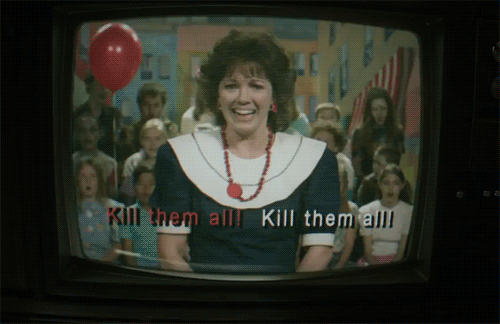
Ok, not THAT horrifying, but absolutely terrifying in a very different way.
(It remake was the bomb, just throwing that out there.)
A rundown, if you’ll read on.
Mae Holland is offered a job at the prestigious, shiny, glittery, wonderful start-up the Circle thanks to a college friend who’s climbed high in the company. Dazed and amazed, she’s the sort of girl who does her best under praise, and believe me, there’s plenty of that at the Circle. Founded by the three wise men (the tech genius Ty, the favorite-uncle-figure Eamon, and the business shark Tom), the Circle is a deceptively utopian, but ultimately vicious new face of everything from software to health insurance. They’ll give you everything you need-- in return, they want to know everything you are, everything you’ve ever seen, everything you’ve ever done. As you read The Circle, you slowly begin to realize that there are more things in your life that you prefer to keep private than you first realized.

It’s like your entire life is now on Facebook, and there are no privacy settings. Everyone can look up anything about anyone, everyone, else.
I lost some sleep after finishing this book; readers who are a bit paranoid to begin with may want to abstain.
There are some things I want to poke at--my fear blinded me for a while, but in retrospect, I have some complaints.
First, and most important, why in hell is Kaldin interested in Mae to begin with? This plot hole didn’t seem so strange to me, at first, but by the end of the book, when you discover Kaldin’s identity, it really doesn’t make sense. I can see why Kaldin targeted Mae to help him in his ultimate goal, but he seemed to be approaching her in a romantic way from the start. Why? In a book that is otherwise airtight, this is like a pressure leak. I know all young males are supposed to be ultra-horny all the time (sexist that I am), but really. He literally could have had any number of girls, prettier girls, smarter girls, more interesting girls. Mae is very bland and malleable, which offers the unpleasant possibility that Kaldin purposely sought her out because she’d give him what he wanted--not impossible, but not in line with his character. In a symbolic way, their relationship is obvious, but this isn’t a very symbolic book. Most of The Circle is terribly clear (even the Trench discoveries). I’ll let it go, overall, but I’d be interested to hear Eggers explain further.
I’m probably just jealous, because anyone else having sex at work is just a reminder of what I could be spending my time on instead of being a responsible adult.
I’m also a little disbelieving that no one else is seeing Tom Stenton jerking off to the possibilities of world domination at his fingertips while all these dumb millennial kids are dreaming their utopian dreams. Seriously? Guy is almost a caricature of Wolf of Wall Street.
Eamon Bailey knows. He knows...

I’m not going to be able to enjoy Forrest Gump if I watch this movie, I know it...
I tell you, it’s really hard to think about this book and find things I liked. It was a good book, believe me, but it’s all just so... real...
But there are definitely goods to find. Setting aside my personal feelings of horror, the style is clean and efficient, very modern and very compatible with the clean, modern feel of the Circle campus and the premise at hand. Eggers keeps a tight clip throughout, never bogging down on too many details, and the results are a stream-lined psychological thriller.
Maybe he didn’t mean to write a psychological thriller, but it sure kept me on the edge of my seat. *coughs*
The characters were a real kick, too. In a world of cut-and-paste, Eggers brings a deliciously unpredictable cast of relatable kooks, infuriating idiots, and careful planners that mesh like Velcro.
But don’t think I didn’t catch Dr. Villalobos, Dave. Just because Mae notes that she’s too gorgeous to be a doctor, doesn’t mean you get away with it. (justkiddingyou’rehumanliketherestofusyoucanhavethisone)
And that Francis asshole! Ugh! I just want to punch him in the throat!
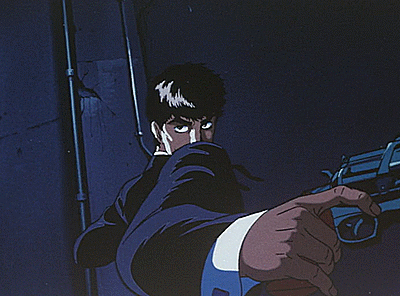
Preeeeeetty much like that, yeah.
Overall, I would hand The Circle to just about anyone looking for a slow-burning drift into the world of invasive monitoring. Are there people out there looking for that? Because we have it here. Right here.
Let’s put numbers to it.
7/10 Voice. Clear and concise, but not remarkable. I’d put Eggers above average in this read, but not in the ‘great’ category. Nothing masterful or artistic in his form, just exactly what it needs to be, no more.
9/10 Characters. Look, I adore the hell out of Eggers’ cast. Really! True, Ty, Eamon, and Tom are exactly what they look like, but that’s the point of the Circle: transparency. Everyone is what they seem, because you can know everything they are. The real mind-trip with all these characters is the way they react to the stark truth of each other. *shivers* But no, you can’t have 10/10 Eggers because I just don’t freaking buy Kaldin being so attracted to Mae out of literally nowhere. Humans don’t naturally magnetize to the inner beauty of others off the street. It’s not a thing--even if it was, we all get to know Mae pretty well by the end of the book... I’m not buying it.
10/10 Story. I still can’t sleep if I think about this too much before bed. I would have given anything to change the end of the book, but all of it would have been ruined if I’d gotten my wish. The entire book hurtles in terrible, traceable pattern to an inevitable end, and with THAT ONE EXCEPTION, none of it should be altered. Nothing removed. Nothing added. It’s awful and chilling and scary as an oncoming train.
Now, I better go find a princess movie to watch--before I start making designer tin-foil hats. 8.6/10 ain’t nothing to shake a stick at, if I do say so myself. Just don’t read if you’re the sort of person who looks at their laptop camera and wonders who’s looking back.
The Circle, I promise, will take away your peace of mind, my friends, but sometimes we can all use a little unease. Especially when that unease comes from a stabbing shred of truth not so deep beneath the fiction.
#the circle#mae holland#kaldin#ty gospodinov#eamon bailey#tom stenton#annie#circlers#all must be known#SeeChange#surveillance#start-up#California#kayak#MS#Mercer#Francis#software#connectivity#frightening tech#invasive monitoring
2 notes
·
View notes
Text

[NAME]: Madelyn “Ghost” Lytle [NICKNAME(S)]: Maddie, Mae, Ghost. [GENDER]: Demi-Girl (they/them preferred) [AGE]: 21
[SPECIES]: human
PERSONAL
[RELIGIOUS BELIEFS]: spiritual agnostic [SINS]: lust / greed / gluttony / sloth / pride / envy / wrath [VIRTUES]: chastity / charity / diligence / humility / Kindness / patience / justice [PRIMARY GOALS IN LIFE]: helping others, being happy, learning [LANGUAGES KNOWN]: English, Nordic runes, a bunch of nonsense languages they made up in school, High school Spanish and a little French. [SECRETS]: IS ACTUALLY HAUNTED. [QUIRKS]: talking to themselves (seemingly), taking photos of new people, leg jiggling, whistling and making noises. [SAVVIES]: photography, exploration, breaking and entering, herbal remedies, modern magic.
PHYSICAL
[HEIGHT]: 5′ 2″ [WEIGHT]: 50kg [SCARS/ BIRTHMARKS]:They have two thin scars that nearly wrap around their right bicep, they aren’t sure where they got them. [ABILITIES/ POWERS]: a family history of witchcraft, particularly perceptive to the paranormal. [RESTRICTIONS]: they are human? because they are particularly perceptive to the paranormal-- they are also generally more receptive of it, meaning that malicious entities have a better chance of hurting them than others.
FAVORITES
[DRINK]: coffee with chocolate syrup [PIZZA TOPPING]: olives. [COLOR]: blue, like greyish blue or really dark blue. [MUSIC GENRE]: acoustic alternative, folk music, ballads. [BOOK GENRE]: fantasy. [MOVIE GENRE]: f a n t a s y. [SEASON]: fall [BUTT TYPE]: small and round. [SWEAR WORD]: supercalifragilisticexpialidocious [SCENT]: petrichor, old books, fire. [QUOTE]: “My friends don’t understand the chaos going through my mind.” [BOTTOM OR TOP]: Doesn’t know yet!
OTHER
[SINGS IN THE SHOWER]: yes. [LIKES BAD PUNS]: Y E S [MORALITY]: lawful / neutral / chaotic / good / gray / evil [BUILD]: slender / scrawny / bony / fit / athletic / herculean / babyfat / pudgy / obese / other [FAVORITE FOOD]: sherbet [BOSS THEME MUSIC]: Forget by Pogo. [THEIR OPINION ON THE MUN]: “they really need to learn there’s nothing to stress about!”
[WAS TAGGED BY]: stolen from myself. [TAG 15 8 PEOPLE]; n a h
1 note
·
View note
Text
Character Names in Eleutherophobia
Since I’ve had a few people ask me about the character names in Eleutherophobia, I figured I’d run down the whole list. These names are approximately in order of appearance in my various fics. To be clear: this is not crossover fiction. These are supposed to be nods to these characters, not the characters themselves. Bearing that in mind, in approximate order of appearance:
Day the Earth Stood Still
Essa 412: a yeerkanization of “Boy 412,” the main character of the Septimus Heap series. In my opinion, the second best treatment of the impact of war on children ever written into a modern fantasy series.
Leslie Burke: the deuteragonist of Bridge to Terabithia. The character always reminded me of a younger Rachel, so I chose to give the name to the bearer of Rachel’s death.
Anne Shirley: the main character of Anne of Green Gables, who often goes underestimated for the extent to which she is a tough, complex, socially awkward heroine written in 1908.
George Little: the younger brother of the title character of Stuart Little. Mostly named because I wanted to give David a last name that implied cowardice without being ridiculously obvious about it.
Lost World
[Steve] Carlsberg: the not-quite-antagonist of Welcome to Night Vale.
Akira
Dr. Miranda Franklin: named for Miranda of Dr. Franklin’s Island. Kind of a pun on my part: the plot of that book involves one of the main characters involuntarily turning into an anaconda.
Jennifer Murdley: titular character of Jennifer Murdley’s Toad, one of the books in Bruce Coville’s Magic Shop series who learns the very hard way to love herself.
Mrs. [Hannah] Gruen: Nancy Drew’s housekeeper.
THX 1138
Joey Costello: the deuteragonist of Tangerine, a story about two boys who have very different sets of troubles with their respective older brothers.
Dr. Pendanski: one of the incompetent counselors from Holes by Louis Sachar.
Jodi O’Shea: far and away my most pointed literary allusion. Jodi is a minor character in The Host by Stephenie Meyer, a book which I love (except for the extremely problematic ending, but I’ll get back to that). The Host is essentially a love story between a yeerk (Wanda) and a human (Ian) whose entire plot is driven by consent negotiations. It’s about Wanda and Ian wishing they could be together but knowing they never will because they can’t be without violating the right to consent of the yeerk’s host, Melanie. Melanie, meanwhile, is in love with a different guy... Who can’t be with her either without violating Wanda’s right to consent.
[SPOILER WARNING] Eventually Ian resolves this love quadrangle by putting Wanda inside a human (“Pet,” and don’t get me started on that name) who has been a controller for so long that she has forgotten how to exert her own conscious will. Wanda and Ian presumably do the horizontal tango using that host instead, AND THIS IS TREATED AS A HAPPY ENDING. Jodi O’Shea also meets the same fate as Pet: Jodi has forgotten how to feed herself or move on her own, so her own husband decides that they should just put her yeerk, Sunny, back in her head. Sunny claims that Jodi is brain-dead... But Sunny is also strongly motivated to lie. (There are also implications that Jodi’s husband becomes romantically involved with Sunny instead, a plot which is so horrifying it deserves its own blog post.) Most importantly, all the main characters are really happy that these poor hosts are vegetables. There is an entire subpopulation of humans who have become entirely dependent on their alien slave masters for survival... and this fact is treated as the solution to all the characters’ problems. It’s celebrated. And, yeah, both THX 1138 and Ghost in the Shell contain some pretty pointed commentary from me on why I find this ending to be so deeply unfortunate. [END SPOILERS]
Ghost in the Shell
Mary Lennox: the main character of The Secret Garden, the first book without pictures I ever read on my own.
Rose Rita: main character of The Letter, the Witch, and the Ring, and arguably one of the first genderqueer characters to make it into a children’s fantasy novel.
Margaret White: the antagonist of Stephen King’s novel Carrie, obsessed with preserving the innocence (and thus the dependent ignorance) of her teenage daughter.
Sophie Hatter: main character of Howl’s Moving Castle, who does in fact make her own clothes.
[Mr.] Broxholm: the titular alien from My Teacher Flunked the Planet by Bruce Coville, one of the most awesome and profound children’s sci-fi novels I have ever read.
Anita Psammead: a nod to The Five Children and It by E. Nesbitt, one of the first ever fantasy novels written for children.
Miss Zarves: the teacher from Sideways Stories from Wayside School who doesn’t exist, because she was accidentally assigned to teach on a floor that was never built.
Nikto 770: nod to the code phrase in Day the Earth Stood Still (the original movie, not my fic).
Kit Rodriguez: the deuteragonist of the Young Wizards series, known for his passion and tendency to care deeply for others.
Aristotle “Ari” [Mendoza]: main character of Aristotle and Dante Discover the Secrets of the Universe.
Dante [Quintana]: main character of Aristotle and Dante Discover the Secrets of the Universe.
Gabriel “G.T.” Stoop: the main character’s mentor in Hope Was Here.
Elijah Springfield: a teen detective from the Veritas Project series.
Lydia [Bennett]: supporting character from Pride and Prejudice.
Nick Adams: a recurring Ernest Hemingway character.
T.J. Avery: next door neighbor to the Logan family in Roll of Thunder Hear My Cry.
Cecily Tallis: the narrator’s older sister (and unwitting victim) in Atonement by Ian McEwan.
Maybeth Tillerman: one of the main characters in Homecoming by Cynthia Voight, a book that critics like to describe as “the anti-Boxcar Children” for its unflinchingly realistic portrayal of childhood homelessness.
June Boatwright: one of the protagonist’s mentors in The Secret Life of Bees.
Caitlin Somers: a Judy Blume character from Summer Sisters.
Alex Morales: main character of The Dead and the Gone by Susan Beth Pfeffer.
Cooper-Trebond: shortening of “Alanna Cooper of Trebond” the name of the main character of Tamora Pierce’s Song of the Lioness series.
Jesse Hauptman: the protagonist’s stepdaughter and mentee in the Mercy Thompson series.
Timmy Dugan: lesser-known real name of WWII comic book hero Dum Dum Dugan, sidekick to Nick Fury and Howling Commando as part of the Marvel universe.
Luke Castellan and Chris Rodriguez: two of the supporting characters from Percy Jackson and the Olympians. I wouldn’t say that Luke Castellan is the first meatsuit I ever fell in love with (despite him being basically a voluntary controller and also a human dumpster fire), but I would say that he made my tendency to care too much about meatsuits in general about 1000 times worse.
“Cornelius”: okay, this one is in fact a crossover—that’s meant to be Tyler Durden, main character of Chuck Palahnuick’s Fight Club. He’s a schizophrenic, lonely guy who goes to support groups for various traumas that he never actually survived (usually under the fake name Cornelius) because that’s the only way he knows how to connect to people.
Odette: the protagonist of Swan Lake and several subsequent adaptations, including Mercedes Lackey’s awesome The Black Swan.
Rod Allbright: another character from My Teacher is an Alien, because I love that series.
Officer Nice: a nod to the song of the same name by Vio-Lence, one of my few non-literary allusions.
Gerald “Jerry” Cruncher: a guy who works as a porter (and remover of bodies) in of A Tale of Two Cities.
Paul Edgecombe: main character of The Green Mile, a deeply conflicted prison guard who gets cast as Pontius Pilate in a modern-day gospel retelling.
Kate Malone: narrator of Laurie Halse Anderson’s amazingly powerful novel Catalyst.
Mae Tuck: matriarch of the titular immortal clan from Tuck Everlasting.
Annie Hughes: one of the main characters from The Iron Giant.
Kirsten Larson: one of the first characters from the American Girl series, an immigrant from Sweden who struggles to acclimate to the United States.
Adah Price: one of the co-narrators of The Poisonwood Bible, a disabled polymath who loves palindromes and puzzles.
Iris Chase: a society lady and heiress from The Blind Assassin, which chronicles family dysfunction and its unique impact on women over several generations.
Dawn Schafer: part of the enormous rotating cast of protagonists from The Babysitters’ Club series, and one of my favorite characters as a kid.
Henry Case: main character of the genre-creating cyberpunk novel Neuromancer.
Parvana Weera: a tough, outgoing young woman whose struggle to keep her family safe during the American invasion of her home in Afghanistan forms the main plot of The Breadwinner.
Raven Madison: main character of Vampire Kisses, who spends a little too much time in her intense fantasy worlds and not quite enough connected to reality.
Mr. [Bob] Grey: pseudonym used by the creature also known as Pennywise the Clown and simply “It” in several of Stephen King’s novels.
Ms. [Mary] Logan: mother of the main character in Roll of Thunder Hear My Cry, because I love that book.
Karana Nicoleño: although Karana, the main character of Island of the Blue Dolphins, doesn’t technically have a last name, her tribe is historically referred to as the Nicoleño.
Total Recall
Vicky Austin: main character of A Ring of Endless Light, a book about coming to terms with dying—and about the many complex shades of victim blaming that can occur in light of unquantifiable tragedy.
Samuel Cornick: roommate to the eponymous Mercy Thompson of the bestselling Patricia Briggs series, a werewolf-doctor who continuously struggles to find meaning in an excessively long life and one of my favorite characters of all time.
The Thing from Another World
Seth Clearwater: a minor character in Eclipse, one of the youngest werewolves of the Quileute pack.
Captain William Nasland: one of the more obscure characters to hold the title Captain America; retconned into the role following Steve Rogers’s “death” in 1945. Acts as both a hero and a villain because he has a well-intentioned but also closed-minded idea of what Captain America should be.
Allison Chapman: main character of Sharing Sam, K.A. Applegate’s lesser-known novel about teenage basketball geeks who back their way into understanding the life, the universe, and everything.
Simon Grace: one of the main characters of the Spiderwick Chronicles.
Giselle Villard: one of the main characters from the Mystic comic book series who is awesome, tough... and more than a little power-hungry.
As far as I can tell, that’s it for the character names in Eleutherophobia. I mentioned here why Marco’s last name is Alvarez and Cassie’s is Day in my series. There are a few dozen other allusions as well (Tom and Bonnie bastardizing the “tears in the rain” speech from Blade Runner, Cassie quoting the epigraph from Home of the Brave, several nods to Remnants and Everworld and The One and Only Ivan, Marco making jokes about Lost World and Alien) and obviously all my fic titles are from classic sci-fi movies while all my song nods are The Best of 1990—2000, but as far as I know that’s it for allusions. If there are any that I missed, or that you’re still wondering about, let me know and I’ll happily clarify.
53 notes
·
View notes
Text
Pluto Alwin Character Page (Updated 7/16/17)

(The GIF does not belong to me)
Kira belongs to @cuddles-for-cassie
Alice belongs to @the-singing-canary
Maia belongs to @royslittleharper
Original Art for her is here
Curious about the rest of team Astro? Masterlist for them is here
BASIC INFO
Name: Pluto Alwin
Original Name: Irmel Alwin (Although she has long forgotten)
Alias: Pluto
Age:
Physically: 6 Years old
Actual Age: 673 years old
Nicknames
Plu
Princess
Little planet
Little Miss
Gender: Female
Race: Human-ish(???) Pluto planet thing
Nationality: German
Date of Birth: July 1st, 1344
Citizenship:
Current: America
Past: England to Germany
Height: 3’5 (feet)
Weight: 42 lbs.
Eye Color: reddish brown eyes
Hair Color: Dark brown
Hair Style: hair slightly wavy and held in pigtails
Skin Color: Light Grey skin
Sexuality: She has the mind of a 6 year old, all she’s thinking about currently is My little Pony
Body Type: She’s a small petite kid
Outfit/Style:
Anything pretty
She finds glitter fascinating, so she has a pair of sparkly pink flats that she always wears
She’ll always wear some form of dress
She would wear her brightly colored fairy princess dress everyday if Makayla would let her
She’ll always have a pair of leggings on underneath her dress
Physical Traits:
As I said before, she’s a small kid
Her hair is so dark, it sometimes looks black.
Faint scars from when she was sick with the black death
Fan Cast: Maggie Elizabeth Jones
Family:
Father: Bero Alwin Status: Deceased
Mother: Agnise Alwin Status: Deceased
Relationships:
Cassandra, The Celestial Witch: Cassandra was Pluto’s owner, in a sense. Pluto and her family had borrowed money from Cassandra, when they couldn’t pay off their loans, Cassandra pitied them, giving them a place to stay and let them work off their loans as indentured servants. Pluto and Cassandra were very close, Cassandra treating Pluto like her own kin and Pluto Vice versa.
Sirius Vance: She loves him! Was extremely shy at first, (as she always is with new people) but once she got to know him more, she absolutely loved playing with him.
Makayla Fray: She finds her scary from time to time, but knows that Makayla only wants what’s best for her. She also discovered very early that Makayla is a human furnace, and since Plu loves heat, she’s often found riding on Makayla’s shoulders or even crawling into bed with her.
Luna Williams: Calls her Lu Lu, and gets all her book recommendations from her. Luna often reads to little Pluto before she sleeps
Kira Kal-El: First person she met on earth that was closer to her age, So she, naturally, immediately thought she was the coolest person ever. She recently had been getting cooking lessons from Kira
Alice Mae Quin: Alice is often the one to take her out to discover the wonders of new earth culture, and Plu looks forward to Alice’s visits
Maia Bailey: Maia often helps little Plu with her ice powers, due to the fact that Plu didn’t have them before her curse.
POWER
Ice manipulation
She can easily freeze things by touching them
She doesn’t mean to; her body is just naturally cold
Can survive in extremely cold climates
Can survive in space without a suit
SKILLS/HOBBIES
She’s a pro with the broom (as in, she cleans stuff well)
Watching My little pony
Playing with her easy bake oven
Has the voice of an angel
HABITS
She’s a sweet heart, but to many people that she doesn’t know scares her, so she often disappears to a quiet corner at parties
She often bites her nails
Hums to herself
Goofy dances when her favorite songs come on
LIKES
WARMTH
Fluffy sweaters to wear over her dresses
Glitter
Unicorns
She loves the colors pink, green and purple
Television, she finds the moving pictures so fascinating!
Microwavable food
Cupcakes, or cake in general
DISLIKES
Being cold
Strangers
Loud noises
Scary movies
Jason Todd (Sirius is not always the best influence…)
STRENGTHS
Being by liquid is always good for her
WEAKNESSES
swimming is a big no for her
The water surrounding her freezes up, and although she can survive the freezing bit, if she becomes completely submerged in water and it freezes over, she’d suffocate.
FEARS
Being a disappointment
Like Sirius, She’s terrified of sick people, mostly because she grew up in the time of the black plague
Death, she died once, and she wasn’t a big fan of it
The dark
Doctors
OTHER FACTS
Pluto’s original name was Irmel, this was the name given to her at birth
She was also the first of the cursed planets
She was born in 1344, straight into servitude
Her parents had borrowed money from Cassandra when they had moved to England thinking tat they would do better there.
They did not, and when it came apparent to Cassandra that they would never be able to pay her back, she made an agreement that they would work off their debt and Cassandra would give them a place to stay and food.
So Pluto grew up in Cassandra’s mansion, Cassandra loving Pluto as her own and Pluto loving Cassandra
The black Plague came in 1347, killing off both of her parents
Cassandra would have saved them with magic, but it was a dangerous time to be a witch
People of their town constantly tried to pin the blame on a witch.
In 1348, when Pluto was 4 years old, she had caught the plague
Cassandra was crushed and refused to let the girl die
So Pluto was healed with magic, but not without consequence
Word around town about Pluto’s miraculous recovery, and the towns people suspected Cassandra of witch craft
Cassandra and Pluto Fled to Germany, but not before catching some very unwanted attention from Cassandra’s mother (who is also a witch)
They live there for two years, that’s when Cassandra’s mother finds them
Her mother has a bit of a bone to pick with Cassandra, so she makes the decision to kill Pluto,
She succeeds
But not before Cassandra cast her own spell, one that preserves the soul of the recently departed
She wanted to save Pluto, but she knew if she brought her back, her mother would always be after her.
So she decided to send Pluto to the farthest known corner of their universe (known to her at least)
She magically modified Pluto’s body to withstand her new home and retain her youth along with linking her to the planet.
Cassandra was planning on figuring out a way to break this curse once she got rid of her mother.
So Pluto was cursed into the night sky, on the small planet that was Pluto
It is unknown what happened to Cassandra after Sirius was made, but bottom line is that she never broke Pluto’s curse
Pluto lived in solitude for 673 years, and then she started getting visions of bright colors and sounds.
It wasn’t long before Makayla showed up and broke her curse
Modern earth fascinates her
All of the glowing signs and machinal vehicles
She’s not aloud out on the field yet
Makayla refuses
She promised Pluto though, that if she still wanted to fight crime when she was older, she could
3 notes
·
View notes